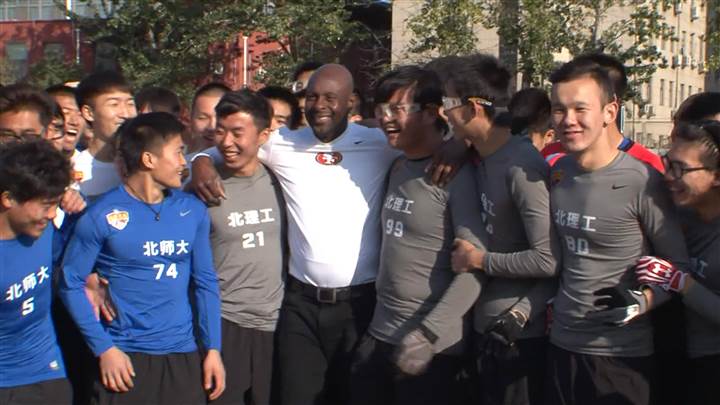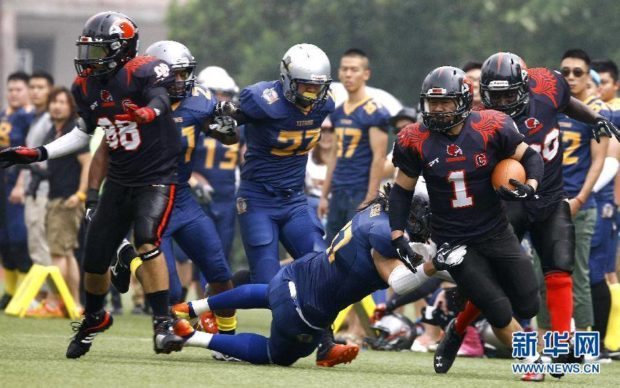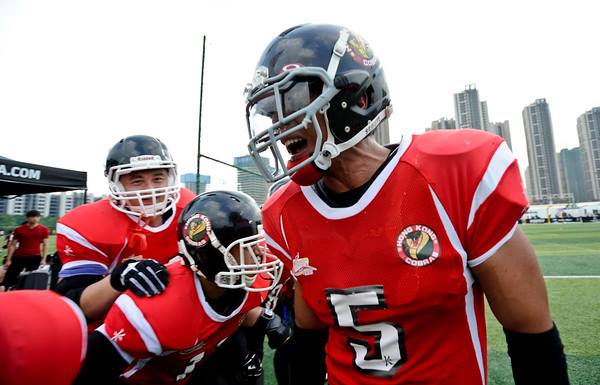China’s Super Bowl Viewers: Literally Monday-Morning Quarterbacks
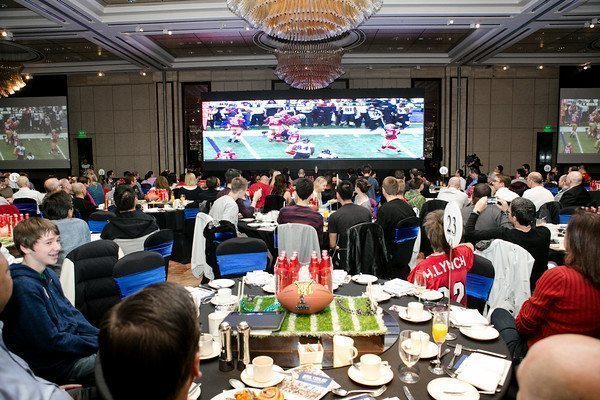
Football fans can knock back PBR Tall Boys, Coors Gold and, of course, Tsingtao beer at Home Plate BBQ, a Southern barbecue joint in Beijing. The Kerry hotels in Beijing and Shanghai, along with the Jing An Shangri-La in Shanghai, also will be hosting official NFL Super Bowl parties.
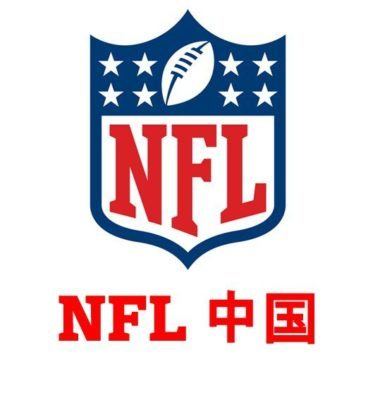
The time difference is one issue the NFL faces in its slow-but-steady approach to building a football (ganlan qiu or “olive ball”) fan base in China, said Richard Young, managing director of NFL China. The number of American football fans in China has reached 14 million, according to CSM Kantar Research.
“Our motto here is to grow forever,” Young said in an interview with China Daily.
How is a football fan defined in China?
It’s someone who has at least a moderate interest in the game. Avid fans, those who actively follow a particular team, number 1 million. The growth is remarkable considering that in 2010, only 1 million Chinese considered themselves NFL fans.
NFL China, which has had a presence in the country since 2007, this season launched the NFL on Tour truck — a mobile audio/visual “NFL Experience” that made stops in Shanghai, Wuxi, Tianjin, Beijing, Chengdu, Chongqing, Wuhan, Changsha and Guangzhou.
NFL games are aired on more than 20 regional channels reaching more than 96 million unique viewers and on five nationwide online broadcasters: PPTV, LeTV, iQiyi, Sina Sports and QQ Sports. The NFL said it has more than 220,000 online viewers per live game.
NFL China’s University Bowl (flag football) weekend in Shanghai drew more than 14,000 and featured an appearance by Hall of Fame receiver Jerry Rice.
But NFL China faces the “structural challenge” of not being an Olympic sport, “especially when there are time differences”, Young said. He said that the Olympics play a key role in building a following for a sport in any country, and American football is not in that mix.
There are “always going to be more patriots than there are sports fans in any country”, Young said. “That gap’s much larger in countries like China. … When you put the flag on the jersey, everybody gets interested. Everybody. You get a growing fan base that way.
“It’s a bit of a chicken-and-egg thing,” he said. “When you have an Olympic sport, you have cascading entities (developing the sport). Contact football doesn’t have a very high female-participation rate, which is one of the requirements” for an Olympic sport.
“We don’t have that wind at our back,” Young said. “What we have is … arguably the best product in the sports market; the one that provides the most return on your investment of free time; the one that has the complexity and the depth that you can talk about and study and learn for your entire lifetime; the one that when you play it provides benefits of interdependence, leadership, teamwork.”
Still, the NFL is steadily increasing its overseas reach. Over the years, the league has played games (mostly exhibitions) in Australia, Canada, England, Germany, Ireland, Japan, Mexico, Spain and Sweden.
Ironically, an exhibition game between the Patriots and Seahawks was planned for Beijing’s Workers Stadium in the summer of 2007 but was ultimately canceled because the NFL said it wanted to concentrate its “global resources” on a regular-season game in London the following season.
“I think you’re going to see more expansion in the NFL in the future,” Young said. “In London, we have three sold-out regular-season games.
“The strategy has gone more toward having the real product, having the NFL there (in London),” Young said.
American tackle football is being played in China right now. There is the American Football League of China (AFLC) and the China American Football League (CAFL), which will launch this fall with indoor arena football. In October, the CAFL sponsored the first intercollegiate Chinese college football playoffs.
“We’ve seen the amazing rise of the AFLC,” Young said. “They play the 11-a-side outdoor game. They must have had 3,000 people at their final game in which the Shanghai Nighthawks took the championship. They now have 12 solid teams; they could double that easily.
“This is the kind of thing that is really useful,” Young said of other football endeavors in China. “We need to have more people playing American football. Having a product in market is good. We all have to kind of help each other.”
Contact the writer at [email protected]
